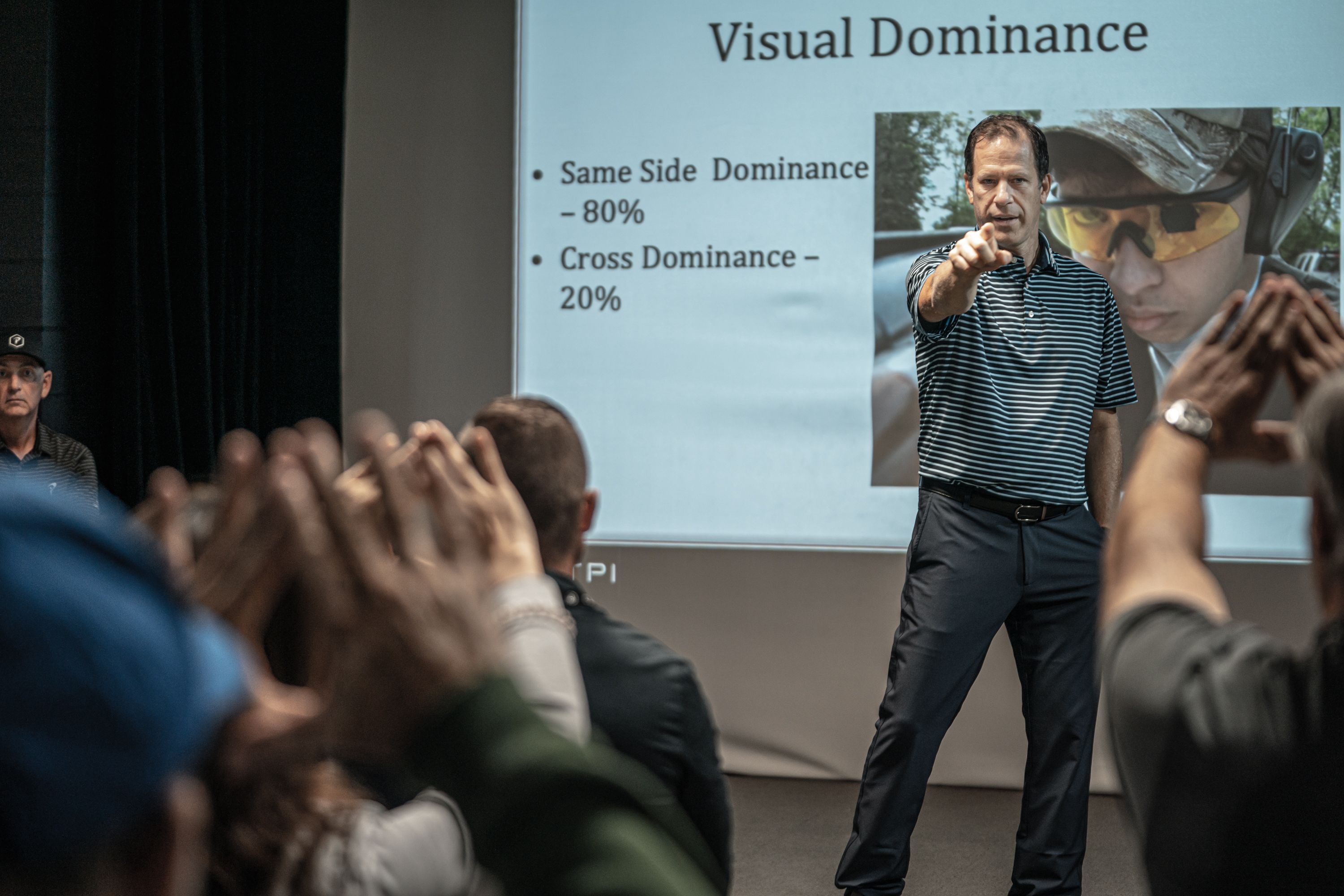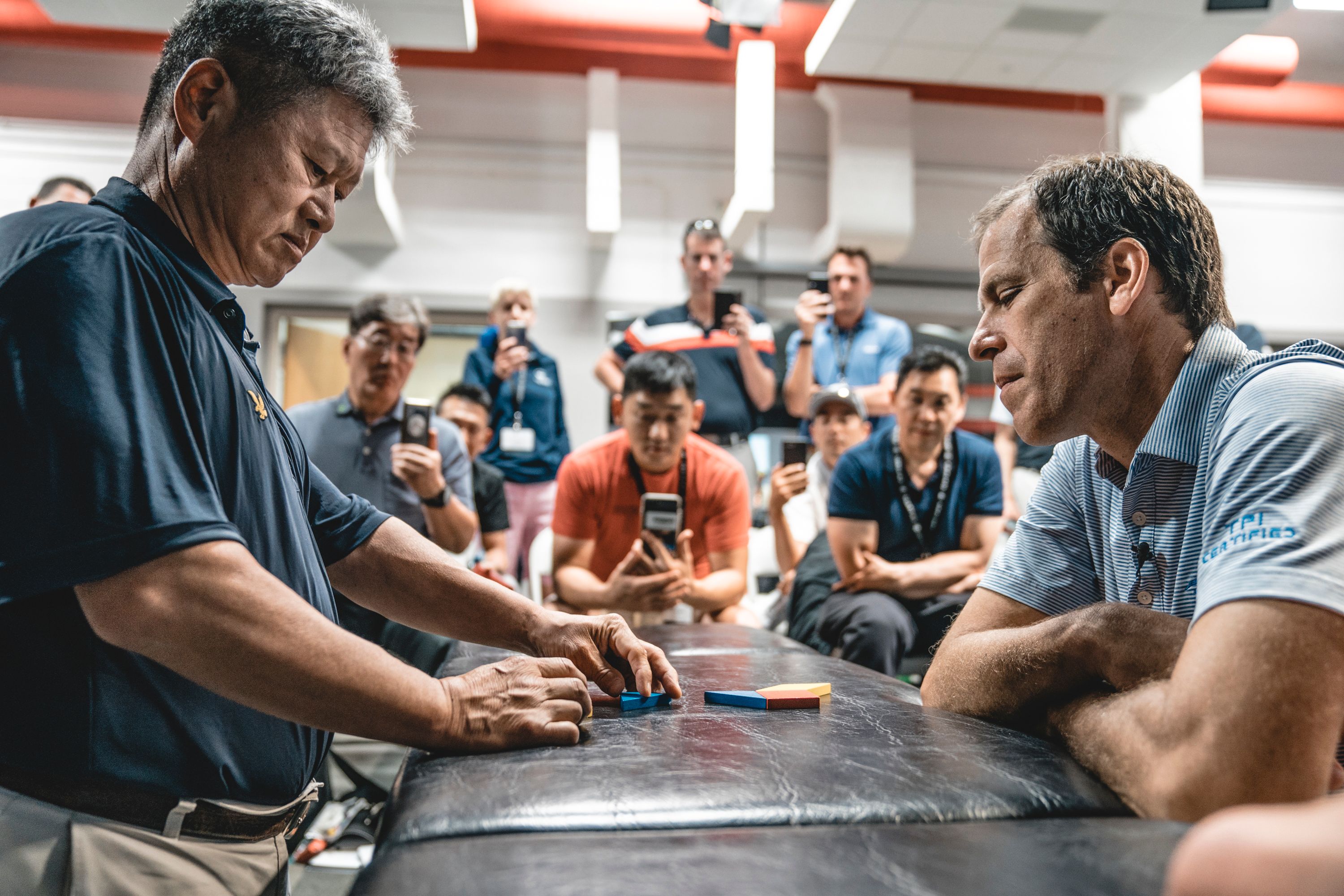IMPROVE MY GAME
Articles
Why (and How) We Assess the Visual System in Golf
When most golfers think about performance, they focus on swing mechanics, fitness, or equipment. But one of the most overlooked systems in the body - the visual system - affects nearly every aspect of the game.
This is why we teach coaches how to assess vision in our Golf Level 2 online course (excerpt above) and Golf Level 3 seminar.
How you read a putt, align your body, maintain balance, see the target, and even visualize a shot are all tied to how effectively your visual system is functioning. Vision is not simply about “good eyesight.” It’s about how the brain interprets and applies what the eyes see.
Eyesight vs. Vision
Eyesight refers to clarity - such as reading an eye chart at 20 feet. Eyesight allows us to recognize faces, read a chalkboard, or see the layout of a green. While important, it is only one piece of the puzzle.
Vision is about extracting meaning from what we see with efficiency and accuracy. It is the integration of sight with movement, posture, balance, and decision-making. In golf, it’s vision - not just eyesight - that determines how well you align, coordinate, and execute.
How we Test Visual Skills in Golfers
Below is a clip we created from our assessment with Joel Dahmen highlighting why and how we test the visual system in golfers.
1. Eye Dominance
Eye dominance refers to the preference of one eye over the other when processing visual information. In golf, this can significantly affect set up, alignment, and ball position.
Testing for eye dominance allows coaches to identify potential alignment challenges and make small adjustments that prevent big misses.

2. Visualization
Visualization is the ability to create a clear mental image of the intended shot before execution. This skill directly affects decision-making, shot planning, and confidence.
Elite players don’t just “see” the target; they visualize the ball’s trajectory, landing area, and roll-out. Without strong visualization, golfers struggle to commit to shots and often default to mechanical swing thoughts. This is also critical in green reading. By assessing visualization ability, coaches can help players strengthen their pre-shot routine and connect intention to execution.

3. Visual Alignment (Binocularity)
Visual alignment is the ability to triangulate objects in space using both eyes together (binocular vision). This skill drives depth perception and spatial awareness.
Golfers rely on this to judge distance, select the right club, and align to the target.
Poor binocular vision can create subtle misreads - misjudging depth, missing lines on putts, or setting up slightly offline. Testing this skill ensures golfers are seeing the course as it really is, not as their brain is misinterpreting it.
Testing eye dominance, visualization, and visual alignment gives coaches deeper insight into how a golfer perceives their environment. Since golf is ultimately a target-oriented sport, these visual skills form the foundation for consistent setup, confident decision-making, and precise execution.
Eyesight and eye health are critical, but they don’t tell the full story. Golf performance depends on the integration of vision with balance, posture, and movement. Limitations in the visual system may be just as restrictive as limitations in mobility or strength.
View TPI Level 1 Online Course
If you're a golfer interested in a physical assessment, you can connect with a TPI Certified expert via our Find an Expert page.